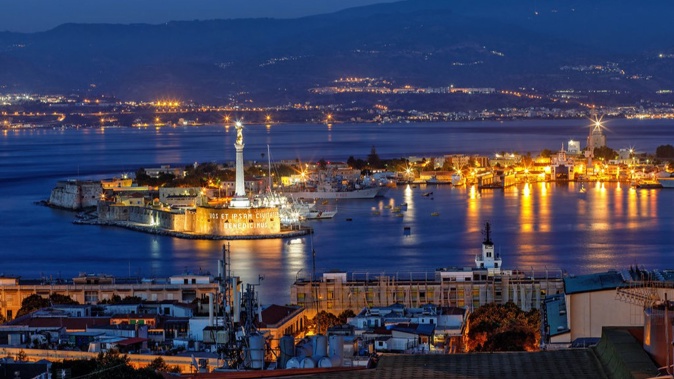
Did you know that there’s less Italian blood in Sicilian veins than there is Phoenician, Greek, Arabic, Norman, Spanish, or French? It’s a stirring legacy to the 25 centuries of passing civilisations who have left their mark on the Mediterranean’s biggest island. The resulting mixture – exotic, spicy and highly inflammable - fuels Sicily’s distinct personality and self-governing pride. She’s a nation within a nation; the adjacent ball to Italy’s foot-shaped peninsula. I recently visited Sicily as part of a riveting Mediterranean cruise aboard the glittering new flagship vessel for Princess Cruises, Sun Princess.
Our port of call was Messina, a coveted trading spot for centuries. The Strait of Messina is only 3km wide and as we glided out of town on an action-packed shore excursion, our ebullient guide wryly remarked that Sicily has been mulling building a bridge to the Italian mainland for roughly 2000 years. The Romans were the first to pitch the idea, suggesting a bridge of boats and barrels could connect the two landmasses. Successive proposals have generally been scuppered by the high seismic risk of the Strait. A century ago, a 7.5 mag earthquake killed 75,000 locals in Europe’s deadliest ever quake – levelling much of Messina. But just three months ago, the final design for what will be the longest single-span bridge in the world was approved. Costing 12 billion Euro, construction is due to start this year, taking eight years to complete.
Heading south along the twinkling Ionian Coast, this is Sicily’s answer to Italy’s Amalfi Coast. Exquisitely beautiful, well-heeled entrepreneurs have built their lavish villas and gleaming resorts up and down the coastline. But nothing can dwarf the muscular strut and swagger of Mount Etna, similar in height to Mt. Cook, and famed as Europe’s most active volcano. Apparently, Etna is visible from the moon. Don’t be surprised to see puffs of smoke billowing from its snow-mopped cone. Etna burbles away like a simmering pot on the stove and the locals don’t bat an eyelid.
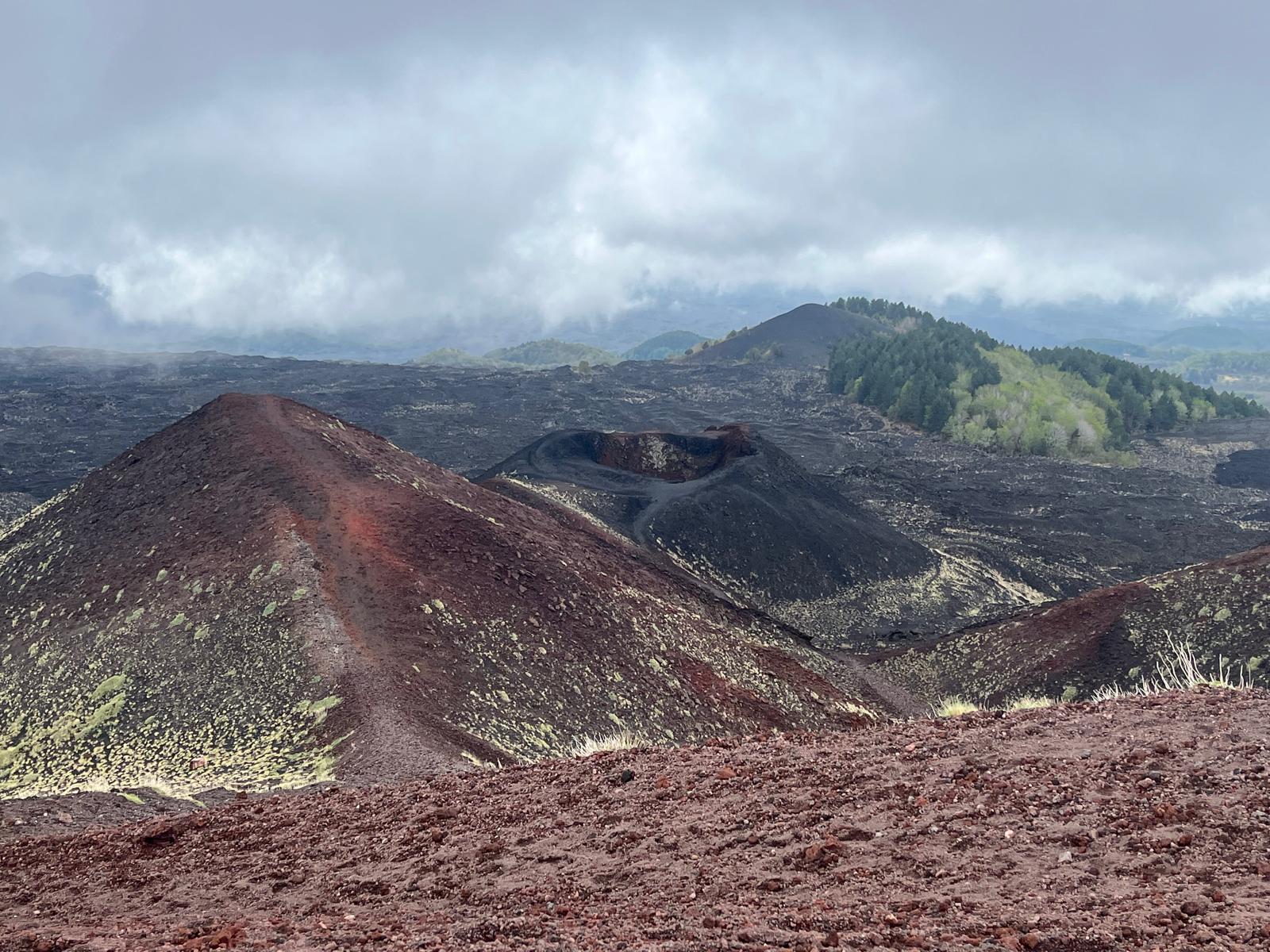 Volcanic Colours on Mount Etna. Photo / Mike Yardley
Volcanic Colours on Mount Etna. Photo / Mike Yardley
Unlike the abrupt and violent eruption at Whakaari/White Island in 2019, Etna is considered effusive, not explosive. When erupting, this stratovolcano tends to unleash lava flows from collapsing craters on the summit and higher slopes, in addition to electrifying lava fountains. This frequent activity, where it is literally letting off steam, dramatically reduces the risk of Etna summoning the force to cause wide-scale, catastrophic damage. Volcanologists do get nervous if Etna’s goes quiet for too long! It is also one of the most monitored volcanoes in the world, dotted with measuring stations that register even the slightest burble. That provided me with great comfort as we wended our way up the vast slopes of this mountain monster.
Locals refer to Mt. Etna as “Montebello,” which means “beautiful mountain”—and there’s no denying the fact that Etna cuts a striking figure, whether dormant or active. You’d think that the locals who live in its shadow would fear it, but as I discovered they actually revere it, particularly for the gifts Etna provides. Thanks to the rich volcanic soil, the regions at the foot of the mountain and on the lower slopes are among Sicily’s most fertile, yielding fruitful vineyards, citrus trees, almond and olive groves.
As we reached the higher reaches of the volcano, at a height of 2000m, vast reams of old lava flows ribboned the slopes in jet black basalt rock, while the landscape was littered with old craters and fissures. The temperature change was dramatically frigid, compared to the sultry Mediterranean warmth at the foot of the mountain. It was quite a novelty to savour the basalt rock-strewn landscape and to walk around and down into an old collapsed volcanic cone. A cable car takes you closer to the summit, where a two-hour walk will reach the top.
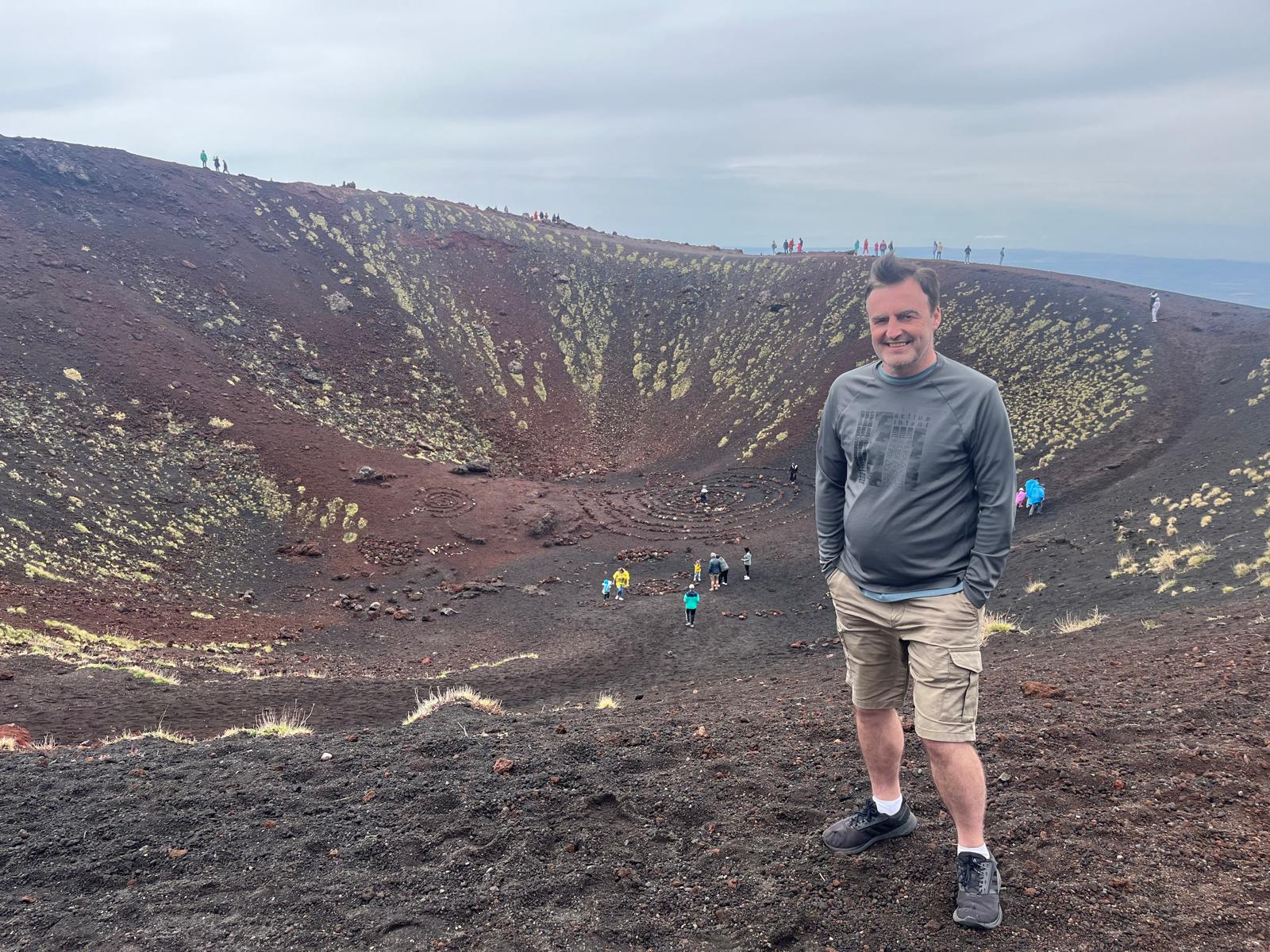 Crater exploring at Mount Etna. Photo / Mike Yardley
Crater exploring at Mount Etna. Photo / Mike Yardley
For a complete change of scenery, we ventured to Taormina, a terraced tiara of a town, loftily strung across the higher slopes of Mount Tauro, reminiscent of Capri. The road engineering entailed in hauling you up here is equally striking. Taormina’s siren-like pull has seduced a rollcall of writers, artists and royalty over the centuries. It’s sophisticated, chic and comfortably cushioned by some serious wealth. But the evocative charm of Taormina is not superficial, because this brilliantly preserved medieval town was the capital of Byzantine Sicily in the 9th century.
The overarching delight is to leisurely stroll the pedestrianised main avenue coursing through town, Corso Umberto I. Brimming with antique and jewellery shops, delis and designer boutiques, it’s a seriously elevated window-shopping experience. Pop into the rococo jewel, San Giuseppe Church. Further west, Piazza del Duomo, home to the 13th century cathedral and a glorious baroque fountain. For head-spinning views of the Ionian coastline, head up Via Leonardo da Vinci to the hilltop village of Castelmola, crowned by a ruined castle.
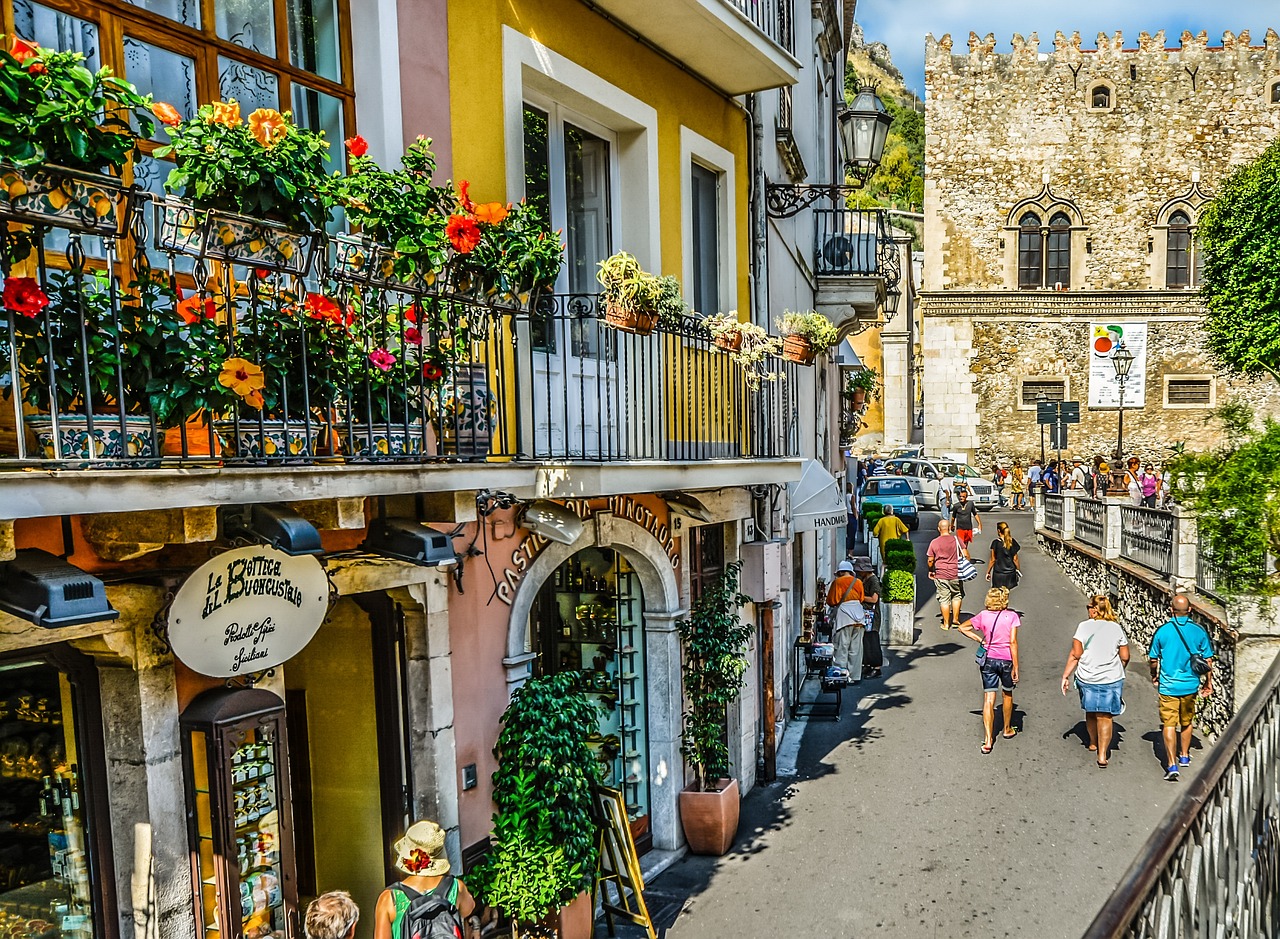 Colour and charm in Taormina. Photo / Mike Yardley
Colour and charm in Taormina. Photo / Mike Yardley
FilmFest is a big deal every June, when Hollywood big shots roll into town for a week of premieres and flesh-pressing at Teatro Greco. This perfect horseshoe-shaped theatre, suspended between sky and sea was built in the 3rd century BC, and is undoubtedly the most dramatically situated Greek theatre in the world. The suitably impressed Romans added their own design touches to the amphitheatre, without compromising its integrity. See it early morning, before the crowds swell.
Taormina is the ideal place to plunge into Sicily’s culinary treasury. Rather than northern Italy’s penchant for eggy pastas, cheese and cured pork, many of Sicily’s most famous recipes feature local, sun-soaked ingredients, such as seafood, olives, raisins, eggplant, capers and tomatoes. The swordfish is succulent and sublime, as are the briny anchovies and oil-packed sardines.
Thanks to centuries of North African and Middle Eastern influences, Sicilian cuisine includes distinctive ingredients such as couscous, almonds, ginger, apricots, cinnamon, and lots of citrus. Arabs who came here popularised fried foods, which is why so many Sicilian street food classics — and even some pastas — are deep-fried. Street eats are headlined by the abiding love-affair for arancini. It’s a hangover from the age of Arab rule in Sicily, 1100 years ago. Today, arancini are breaded and fried risotto balls, typically filled with tomato, mozzarella, ragu and ham. When in Taormina, head to Da Cristina where you can grab a box of six and indulge in the perfect snack while wandering the ancient streets.
One of Sicily’s most famous exports is undoubtedly cannoli, deep-fried pastry tubes piped full of fresh, creamy ricotta - then dusted with powdered sugar. The mark of a high-quality cannolo is one that's filled right when you order it — otherwise, the shell gets soggy and loses its crunch. After tasting cannoli at a Sicilian pastry shop, you’ll know why they say, "Holy cannoli."
 Cannoli in Sicily. Photo / Supplied
Cannoli in Sicily. Photo / Supplied
Definitely dig into cassata. This elegant Baroque-style dessert might look like Jelly at first glance but take one bite and you’ll be begging for more. Traditionally served at Easter, but now available year-round, cassata is a combination of ricotta cheese, pistachio-tinted marzipan, white icing, and candied fruit, layered over a liqueur-soaked sponge cake. Magnifico!
Granita is another Sicilian staple, but it’s a polariser. Originally hauled by day labourers from the island’s volcanic peaks, Sicilian ice — or granita — is much easier to find today. Made from water, sugar, nuts and fruit, this slushy treat can be eaten as a refreshing afternoon treat or even for breakfast with a brioche or coffee. It’s never completely frozen but mixed continuously to obtain a texture that is simultaneously grainy and creamy. Street vendors all over Taormina stock this treat in a wide variety of flavours, including almond, coffee, lemon, peach and pistachio.
The Sicilian ice-cream sandwich is no less polarising – you’ll either love it or hate it. Brioche con gelato, typically eaten at breakfast, consists of a big buttery, soft Brioche roll that is served warm and split open, filled with a couple of scoops of gelato, particularly pistachio and hazelnut. I loved it.
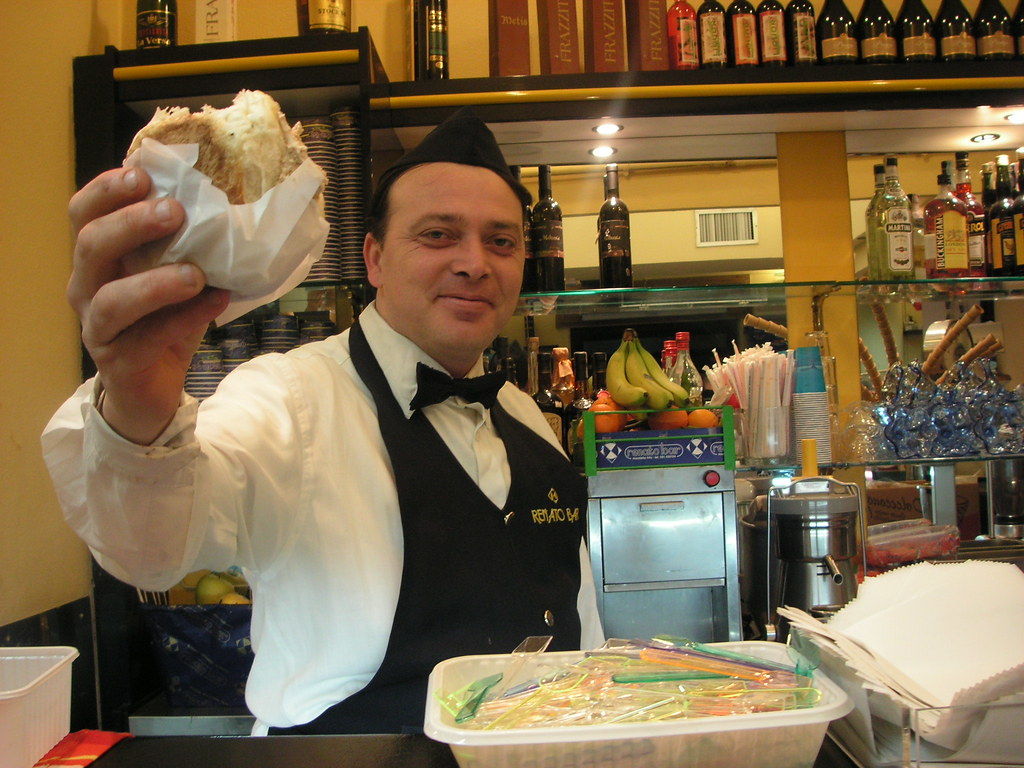 Brioche con Gelato in Sicily. Photo / Supplied
Brioche con Gelato in Sicily. Photo / Supplied
For something more substantial, the ultimate dish to try in Sicily is Pasta alla Norma, inspired by Vincenzo Bellini’s 19th-century opera Norma. This celebrated dish is composed of sautéed eggplant, tomato sauce, fresh basil and ricotta salata. It’s arguably an even greater masterpiece than the namesake opera. Satisfying and herby, this is a cranking pasta. I loved sampling the local wines, which have been produced here since the time of the Greeks. Some of the locally grown grapes, such as the red nerello grape, can be found only in Sicily. The Mount Etna area has become a magnet for boutique wine producers for its the rich volcanic soil and old vines. Get amongst it!
I visited Sicily aboard Sun Princess, the game-changing new addition in the Princess Cruises’ fleet. As the next level Love Boat, Sun Princess is an engineering marvel, powered by LNG, and the most luxurious Princess ship built to date, with an enthralling array of entertainment and activity offerings. This glorious ship is like a floating glasshouse, with the most balconies and sun decks on any Princess ship, lapping up the sunshine and crystal-clear waters of the Mediterranean and Caribbean. www.princess.com
Explore the world with the trusted name in travel insurance, Cover-More Travel Insurance, which has you covered with added safeguards, over and above the typical travel cover, for the likes of medical treatment. In addition to single-trip cover, multi-trip annual cover is another great option, wherever you want to go. Check out the full range of protections and tailor the level of cover to your requirements. Cover-More’s 24-hour global assistance centre is just a phone call away. https://www.covermore.co.nz
Mike Yardley is our resident traveller on Jack Tame Saturday Mornings.
Take your Radio, Podcasts and Music with you









